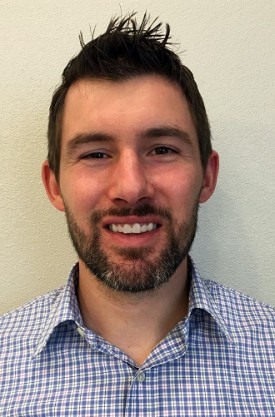Accounting for the Patient in the Healthcare Revenue Cycle
Aligning the healthcare revenue cycle with the patient experience and patient demands will help to boost collections and streamline clinical encounters, a healthcare CFO explains.

Source: Thinkstock
- From value-based care to record-high levels of patient financial responsibility, the healthcare industry is undergoing a tremendous amount of evolution. And the healthcare revenue cycle is having to learn some new tricks to keep up.
Top of that list is creating a patient-focused healthcare revenue cycle, explained Andrew Kouba, CPA.
As the CFO of Abilene Diagnostic Clinic, PLLC, a multi-specialty physician group in Texas, Kouba has observed a significant change in how the healthcare revenue cycle works. When he first joined Abilene in 2016, patient accounts receivable (A/R) was at about 14 percent. Each physician in the group maintained his own collections and billing systems, and the group did not have a patient portal.
Abilene’s revenue cycle wasn’t addressing the stakeholder at the center of care: the patient.
Nearly one-half of patients prefer electronic medical billing and payment whether through the patient portal or a web-based platform. And patients are demanding providers keep their credit cards on file, offer a provider website, and automate payment plans for medical bills.
READ MORE: High Patient Experience Scores Boost Hospital Net Margins by 50%
However, few physician offices meet the new demands from their patients. Almost all organizations recently surveyed by HIMSS Analytics and Waystar said they still primarily bill patients using paper, and only about 20 percent of providers can store credit card information for their patients.
Providers are missing the mark when it comes to patient demands, and they are losing revenue as a result.
With patient revenue challenges in mind, Kouba implemented a consolidated medical billing system that offered patient-centered payments options across Abilene. Within the year, patient A/R fell to two percent and Abilene’s revenue cycle metrics continue to improve with the physician group notably collecting $9 more per visit compared to 2015.
Retooling the revenue cycle to account for the patient experience is key to not only improving patient A/R at Abilene, but also the entire revenue cycle, Kouba recently explained to RevCycleIntelligence.com.
“One of the pieces that we're focused on is trying to create patient self-service pathways to care,” he said. “We want to simplify the process from preregistration through bill collection or prepayment registration and try to automate that. I see the self-service pathway similar to Disney's FastPass.”
READ MORE: Aligning the Healthcare Revenue Cycle with Patient Experience
Patients may not perceive their trip to a doctor’s office as enjoyable as a vacation to Disney. But providers should be aiming to deliver a similar high-quality experience to meet patient demands and boost collections.
“Disney is one of the best experiences of all time and when you go there, they want you to interact with the people, all their products, and just enjoy yourselves. The last thing Disney wants you to think of is the terrible lines. They want to erase that so you can focus on the magic of Disney,” he elaborated.
“If we can remove the pain points and strive to ease that front piece, the patient will be focused on a friendly conversation when they walk in the door with the person that can answer questions,” he continued. “They're not being pestered to pull out their wallet.”
Designing the revenue cycle experience with the patient in mind will allow patients and their providers to focus on the primary reason for healthcare, which is improving patient outcomes.
Implementing a patient-focused revenue cycle
Kouba’s strategy for establishing a patient-focused revenue cycle is analyzing each component of the revenue cycle and determining how each part can be retooled to account for the patient experience.
READ MORE: 4 Key Ways to Improve Healthcare Revenue Cycle Management
To start, the CFO is targeting registration. “We're really focused on trying to ramp up and simplify the patient registration process across our entire clinic,” he said. “Specifically because we have a multispecialty group, we are trying to customize and standardize as much as we can.”
Abilene is looking to implement a registration platform that captures all of the information providers need to complete a clinical visit. The registration platform should be able to gather data from patient questionnaires, screenings, and other documents that are needed to complete a visit.
And the information should be in the system before a patient even shows up to an appointment.
“Ideally, you walk into the clinic, say hello to a greeter, and hopefully, you're roomed by a medical assistant within a short time,” Kouba explained. “It would be great if the medical assistant just has to open the door, call a name, and they have most of that information already squared away.”

Automating patient data collection will also help Abilene to collect patient information correctly the first time.
“Having that information filled out electronically beforehand by the patient captures their data points so much better than having it on paper. The odds of us capturing data on paper is a lot less likely,” he said. “It's also more repetitive in nature. The doctors have to do it again on the charting side of things.”
Implementing a patient-focused collections strategy is also key to aligning the healthcare revenue cycle with the patient experience.
At Abilene, Kouba already established a consolidated medical billing system for all of its participating physicians, resulting in significant revenue cycle improvements. But the physician group isn’t done with revamping its patient collection strategy to meet patient needs.
The group’s CFO is looking into implementing a platform that gives patients more ownership in the collections process, particularly at the front-end of the revenue cycle.
“There's a quote attributed to Ben Franklin that says, ‘Tell me and I forget. Teach me and I remember. Involve me and I learn.’ If you can get patients involved in the process and give them ownership, they become engaged, and then we'll see better results,” he continued.
“If patients understand the front-end process and what their benefits and insurance cover, then there shouldn’t be a backend question because you covered that at the front,” he added.
Offering patients ownership in the collections process is still in development at the Texas physician group, but Kouba hopes healthcare revenue cycle management vendors will start to offer platforms that can achieve patient-focused collections.
“What I would love to see is as a patient of Abilene Diagnostic is getting cued at the beginning of the year to update insurance information and then it's saved on file. Then, hopefully they'll give the payment information as well,” he said. “So, you can capture both the payment and the data, as well as annually collect their insurance information so it's in there and you already have that piece verified.”
“It’s about trying to get all of those aspects captured and automated, so every time a patient comes for a visit, they don't have to pull it back out,” he stressed.
For Kouba, a patient-focused revenue cycle starts with redesigning the registration and collections processes to align with the patient experience. But the journey may be different for other healthcare organizations, he warned.
Healthcare organizations should take the process step-by-step to ensure the organization is implementing systems and strategies that not only meet patient demands, but also the needs of providers, he explained.
For example, he found that self-scheduling is not ideal for Abiliene. “The hang-up is not the technology, it's more on the provider's side,” he said.
Providers at Abilene are generally not on call. They turn over patients to hospitalists when appropriate, so self-scheduling is difficult because each provider’s schedule depends on what their rounds look like that day.
“It's very difficult to get them to commit to blocks of time,” Kouba emphasized.
The CFO will stay away from true patient self-scheduling and implement more of a self-check-in strategy.
“To me, self-scheduling is changing the patient’s expectation. Self-scheduling is very 9:00, 9:15, 9:30, and expectations are tough in those circumstances. The check-in feature is more about setting a general boundary,” he explained.
“Getting some sort of ability to check in early or giving a heads-up so their wait time is as short as possible,” he continued. “It still feels like the patient has something to control, but it's a little softer and we can be a little more flexible with it.”
The healthcare revenue cycle will need to align with the patient experience. The increase in patient financial responsibility and value-based care’s emphasis on the patient experience is driving healthcare organizations to redesign their financial processes.
However, healthcare organizations should be looking at their individual market space to determine how to align their revenue cycle with the patient experience.
“It is a journey and it is very much about listening to the providers and getting their insight on how the patients handle it, as well as finding what's cost-effective and makes sense long-term versus just trying to do everything,” Kouba concluded.
